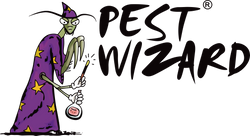Description
Selectively attracts Halyomoropha halys for monitoring the pest population and reducing the number of breeding adults.
Contents
Lure Pack (PWL117): 2 pheromone lures. MSRP $13.99. Case of 10.
Trap (PWT600): 1 Brown Marmorated Stink Bug trap with hanger. MSRP $75.99. Case of 1
Dimensions
Lure Pack: 6 x 4 x 0.25 inch, 0.1 lb (unit), 6 x 4 x 4 inch, 0.5 lb (case)
Trap: 32 x 12 x 10 inch, 3 lb (unassembled unit/case)
Useful Information
Brown Marmorated Stink Bug
Wholesale orders only. Price and quantity is by the case.
For retail ordering visit our Store Finder.
Adding product to your cart
Selectively attracts Halyomoropha halys for monitoring the pest population and reducing the number of breeding adults.
Contents
Lure Pack (PWL117): 2 pheromone lures. MSRP $13.99. Case of 10.
Trap (PWT600): 1 Brown Marmorated Stink Bug trap with hanger. MSRP $75.99. Case of 1
Dimensions
Lure Pack: 6 x 4 x 0.25 inch, 0.1 lb (unit), 6 x 4 x 4 inch, 0.5 lb (case)
Trap: 32 x 12 x 10 inch, 3 lb (unassembled unit/case)
Useful Information

Brown Marmorated Stink Bug
Halyomoropha halys


Crops Affected: A wide range of plants, including tree fruit, vegetables, shade trees, ornamentals, and leguminous crops.
States Affected: Serious pest of Mid-Atlantic region, but has spread over most of the lower 48 states and expected to be present in all states soon.
Life Cycle: During autumn, Brown Marmorated Stink Bugs (BMSB) gather in large groups around buildings or on trees. They then seek sheltered spots to spend winter as adults in a resting stage called facultative diapause. In spring, they become active, feed for around two weeks, and mate. Females lay clusters of about 25 eggs. First instar nymphs feed around the egg cluster before dispersing. Typically, one to two generations occur annually.
Damage: Stink bugs are bothersome as they are attracted to lights and gather in large numbers in winter. Inside buildings, they emit an unpleasant odor when disturbed or crushed. However, they do not reproduce or cause damage indoors, nor do they bite or pose toxicity risks to humans or pets. Stink bugs mainly harm fruits and fruiting vegetables, injecting destructive enzymes and feeding on juices, resulting in unsightly marks and deformities. Damage can be severe, making affected produce unmarketable. They also feed on buds, flowers, leaves, stems, and even the bark of young trees.


Season to Trap: March to October
How To Use: Hang trap with lure inside at shoulder height near at risk or affected crops. Replace lures every 30 days through the season. Empty collector cups of dead insects as needed. Adults and nymphs are attracted to the strong scent in the lure and the color of the traps in this kit. When they land on the smooth plastic, they cannot grip it and will fall into the collector from which they cannot get back out.
Additional IPM Solutions: Avoid practices that destroy or disrupt native beneficial insects. Utilize row covers, beneficial insects, trap crops, and hand picking. Check leaf undersides for eggs. Pyrethrin sprays may work on nymphs but not adults. To prevent home infestations, use screens and sealed windows, and avoid porch and indoor lights near open doors or windows. If inside, vacuuming is advised.
Earth Friendly
Professional's Choice
Proven Effective
Fast Shipping
Photography and graphic art copyright:
Pest Wizard Brands LLC
Adult: Whitney Cranshaw, Colorado State University, Bugwood.org
Cluster: Gary Bernon, USDA APHIS, Bugwood.org
Eggs and nymphs: David R. Lance, USDA APHIS PPQ, Bugwood.org
Nymph: Gary Bernon, USDA APHIS, Bugwood.org















